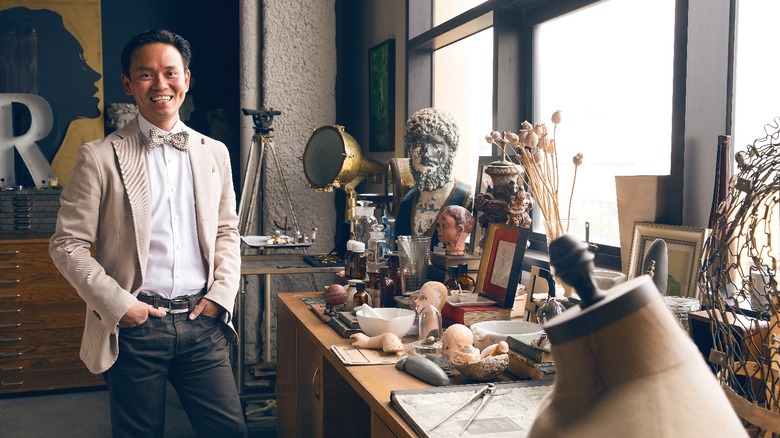The Design Rules That Jonathan Rachman Ignores - Exclusive
We may receive a commission on purchases made from links.
Jonathan Rachman is celebrating the release of his monograph "Currently Classic: Jonathan Rachman Design," a culmination of 20 years of interior projects. The images depict spaces that defy trendiness and conventionality as well as the easy categorization our minds take pleasure in. Rachman understands that the unpredictable can be beautiful, and he allows for serendipity. From richly layered rooms teetering on excess to spare, restful spaces where furniture becomes sculpture, there is a feeling that Rachman's designs evolve from thoughtful observation rather than any sort of playbook.
The saturated colors and pattern mixing of Rachman's childhood in Sumatra are combined with classical influences from an early adulthood spent in Europe, followed by what he refers to as a subdued San Francisco aesthetic (from his current home base) and further threaded with inspirational travels to far-flung places. He came to his career as a self-trained interior designer in a similar purposeful meandering. Rachman makes no secret of his homeschooling, so to speak, and his conversation with House Digest implied there is freedom in not having been taught the "correct" way of doing things.
Jonathan Rachman creates interest with contrast
It's evident that Jonathan Rachman likes to play. Every nuance appears to be considered, and there is joyous irreverence for the expected. During an exclusive interview with him, we asked if there are design directives he delights in ignoring. "Remember, I still don't know the rules, so what rules am I breaking?" he coyly responded.
However, he conceded, "Apparently I break the scales rule. I love putting larger scale items in smaller spaces as I believe they cheat the eyes. Designers or people generally put smaller furniture in smaller spaces; I do just the opposite as it gives the space a bigger illusion. I also learned about how I like to break the modernism rule. I never really designed anything in a pure modern sense ... Instead, I love combining the old and the new, the antique and the modern. For me it is one of the most beautiful juxtapositions in design."
Whether pairing French dining chairs with a modern tulip table and a contemporary art piece or contrasting lush upholstery with a tree-stump table and city views, there is a sense of Rachman's education at work. In less competent hands, the symbiosis could not exist so successfully, if at all. "My two worlds always collide but harmoniously: the east and the west, the bold and bright vs. the neutral and calm," Rachman shared. "I know when to use the patterns over patterns with daring colors or when to pull back, edit, and to calm a space," he explained.
A rule we should follow, according to the designer
Jonathan Rachman crafts personal homes with a singular viewpoint and for a particular occupant, time, and space. "I can't stand going to a house and instantly it reminds me of a generic showroom look and this house looks almost the same of the rest of their friends," Rachman relayed. He draws a parallel between interiors and identity, noting, "Part of the reason why people are playing it safe in decorating is to copy other people's design and style ... To try to be someone else in life is not only unbecoming, it is boring and almost impossible."
Instead, he takes a cue from personal fashion advice and encourages experimentation in interior design as well: "Mix it up, try using antique chairs with your modern table, try to wallpaper your entire room and ceiling, do something outrageous ... If you don't like it, you can always redo or try something else," he continued, "but for heaven's sake, be you!" That's one rule Rachman believes worth following.
"Currently Classic: Jonathan Rachman Design" is published by Flammarion.


